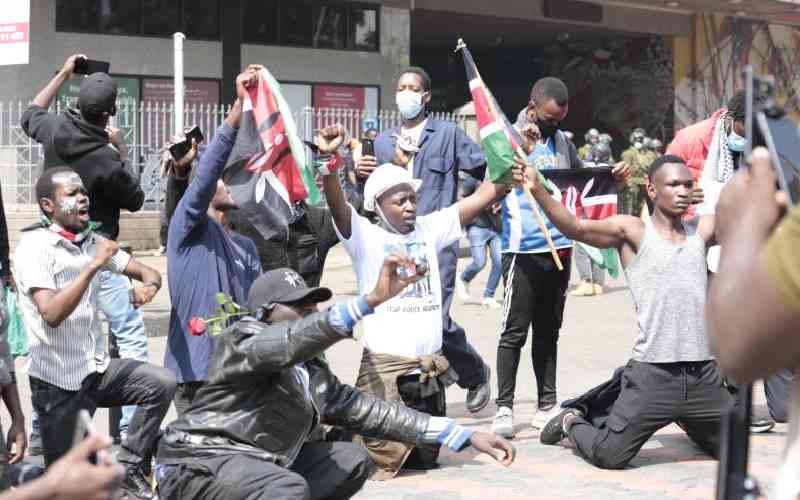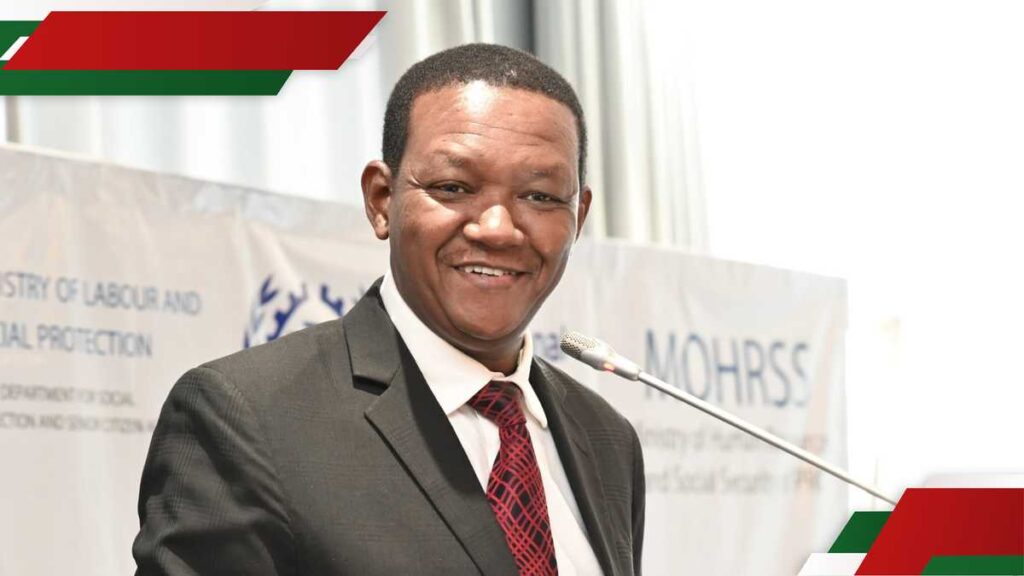A government report has highlighted a controversial police strategy used to suppress anti-tax protests in Kenya during June and July this year.
The report, from the National Crime Research Centre (NCRC), details allegations of police abusing power by fabricating charges against protesters to keep them in custody without bail.
According to the NCRC, police officers reportedly changed tactics after courts initially granted favourable bail terms to protesters.
To counter this, police allegedly charged demonstrators with serious offenses, such as arson and robbery with violence, instead of minor infractions like unlawful assembly.
By using these severe charges, police ensured higher bail terms, effectively prolonging detentions.
“During the Gen Z-led protests, police charged protesters with serious crimes to attract higher bail terms, thereby enabling extended custody,” the NCRC report stated.
Human rights advocates have condemned these tactics as rogue and unlawful. Wanjira Wanjiru, from the Mathare Social Justice Centre, expressed concern over security organs allegedly oppressing ordinary Kenyans.
“This shows how low our security organs have sunk, all geared towards frustrating Kenyans and instilling fear,” Wanjiru stated.
The NCRC report also criticises some magistrates for setting high bail and bond fees, impacting the momentum of protests.
For example, young, unemployed demonstrators faced bail amounts up to Sh100,000, which many could not afford.
The report aligns with findings from the Independent Policing Oversight Authority (IPOA) and the Kenya National Commission on Human Rights (KNCHR), both presented to the National Assembly’s Administration and Internal Security Committee.
“There was indiscriminate arrest of children, which contravenes the Children’s Act and international conventions,” noted Professor Marion Mutugi, a KNCHR Commissioner.
Stay informed. Subscribe to our newsletter
The government allegedly infiltrated protests by trying to buy off leaders and using plainclothes police to carry out abductions and torture in unmarked vehicles.
Victims reported being held in basement cells, handcuffed, and guarded by armed officers with walkie-talkies.
The KNCHR report noted challenges in holding officers accountable due to their concealed identities during these actions.

Inspector General of Police Douglas Kanja denied any police involvement in abductions or disappearances, stating, “Police do not abduct or kidnap; police only arrest and detain in lawful facilities within stations.”
The KNCHR also revealed that the government deployed counter-protesters who were protected by police. These counter-protesters, reportedly given fuel for over 100 motorcycles, were allowed access to Nairobi’s CBD while Gen Z protesters were dispersed.
Activist Wanjiru emphasized the need to defend freedom of expression, asserting, “We must guard our freedoms of speech. When we lose our fear, they lose their power.”
KNCHR reported that some arrested individuals were not booked and were detained for over 24 hours without court appearances.
Among those detained were 45 children, held together with adults. The report also documented instances of police misconduct, including the alleged teargassing of medics at Jamia Mosque, Holy Family Basilica, and a maternity wing in a Mtwapa hospital.
“Many people reported being frisked and robbed of valuables and money by the officers arresting them,” said Professor Mutugi.
The KNCHR called on IPOA to recommend command responsibility charges in cases where specific officers cannot be identified.
They urged MPs to sanction IG Kanja and the Interior CS over police conduct during the protests and requested full access to police deployment records.
Regarding missing persons, Kanja reported 57 cases: six people were found dead, 22 were alive, and 29 still missing. KNCHR reported that 60 people died from bullet wounds during the protests, with 1,376 arrests recorded nationwide.
The commission also documented 71 abductions, of which 26 people remain missing. IPOA recorded six missing persons, two fatalities, and 20 found alive.

























